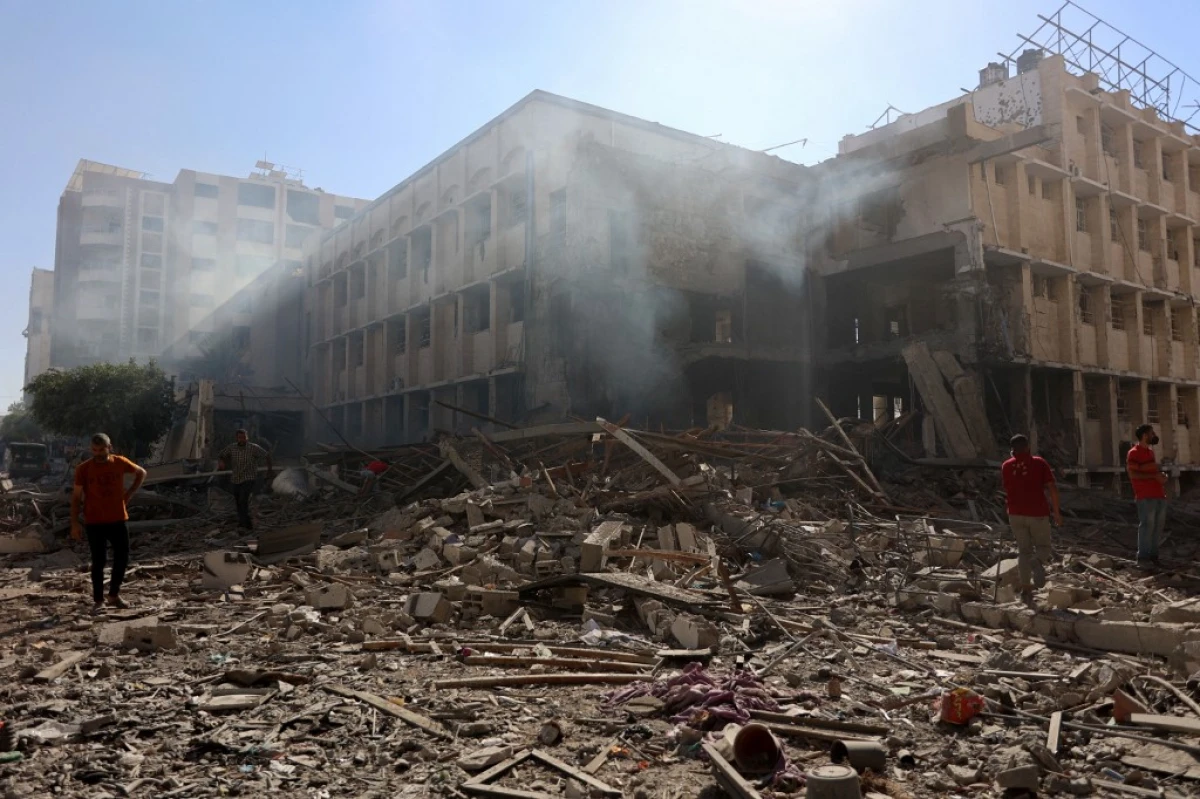
The Israeli Army ordered on Wednesday, July 10, 2024, the total evacuation of the city of Gaza, in the north of the enclave, after several days of partial warnings to specific neighborhoods that allowed the troops to advance towards the western areas of the capital.
>> Read more: The current state of the war between Russia and Ukraine: has the conflict reached a stalemate?
Dropping leaflets from the sky warning that “Gaza will remain a dangerous combat zone,” the armed forces called on civilians to “move quickly” to the city of Deir al Balah, in the centre of the Strip, and to the nearby town of Zawayda.
To this end, the military has designated safe routes for accessing the Al Rahid highway in the west and Salah Al Din highway in the east, both corridors that run across the entire Strip from north to south.
“Where are we going after 300 days of torment? Do you want us to go south?” two young men, Ahmed Asraf and Mohammed Abu Naseem, are seen saying this in a video shared on Instagram, in which one of them appears tearing up the Israeli pamphlet.
Israeli Army Chief of Staff Lieutenant General Herzi Halevi said Tuesday, assessing the situation in the centre of the Gaza Strip, that operations in neighbourhoods of the capital such as Shujaiya and in southern Rafah have as a common denominator the “determination” to eliminate as many Hamas operatives as possible in order to fulfil a mission: to “put pressure” on and recover the 116 hostages still in Gaza.
Thousands of Palestinians are being forced to leave the Gazan capital in the face of the Israeli advance, although no official figures have yet been published on how many people will be displaced by this evacuation order.
Only from Shujaiya, where the Israeli incursion began two weeks ago, Some 80,000 people have been forced to seek refuge, according to the UN Office for the Coordination of Humanitarian Affairs (OCHA).
Humanitarian crisis in Gaza
Across the Strip, nine out of 10 people have experienced at least one displacement, while the majority have had to move from one place to another on several occasions, according to data from the UN agency for Palestinian refugees (UNRWA).
“There is really no safe corner in Gaza.“WHO Director-General Tedros Adhanom Ghebreyesus wrote on social media, warning that the latest evacuation orders would further compromise the provision of vital assistance in northern Gaza.
In the capital, Al Ahli Baptist Hospital and Friends of the Patient Hospital are out of service, he wrote, while Al Helou, As Shahaba and Al Shifa hospitals, located near blocks that have had to be evacuated, are still operational, the first two only partially.
“These crucial hospitals and medical facilities could quickly cease to function due to hostilities in their vicinity or obstruction of access,” he warned, calling for a ceasefire.
UNRWA Secretary-General Philippe Lazzarini added in a post on social media that four of the agency’s schools had been attacked (killing around 50 people) in the past four days, while two-thirds of all schools had been bombed since the start of the war.
Israeli attack leaves 27 dead
On Tuesday, an attack near an UNRWA school where displaced people were taking refuge in Khan Yunis, south of the Strip, killed at least 29 people.
The Hamas government, for its part, denounced in a statement that for 65 days, Israel has “prevented the entry of humanitarian aid and medical resources into Gaza” by not allowing the entry of trucks transporting them.
According to the latest OCHA report, “No commercial trucks (those that usually transport fresh food) have entered Gaza in months,” resulting in “a lack of protein sources on the local market,” where northern Gazans have little access to flour and canned food (brought in by aid agencies) or a few locally produced vegetables sold at very high prices.
Ceasefire negotiations
Israeli Prime Minister Benjamin Netanyahu met in Jerusalem on Wednesday with US presidential coordinator for the Middle East and North Africa, Brett McGurk, who traveled to Israel from Egypt, where he took part in talks seeking a ceasefire in the Strip.
During his talk, Netanyahu “stressed its commitment to the deal as long as Israel’s red lines are preserved.”
On Sunday, the prime minister laid out the country’s red lines in negotiations with Hamas, including that any hypothetical agreement would allow the army to resume fighting in Gaza, where 38,295 people have been killed since the start of the war and another 88,241 wounded.
>> You may be interested in: Israeli attack in Gaza leaves 46 dead: school and refugee camp were the targets
Source: https://www.noticiascaracol.com/mundo/israel-ordena-evacuacion-de-gaza-tras-varios-ataques-que-dejaron-decenas-de-muertos-cb20


